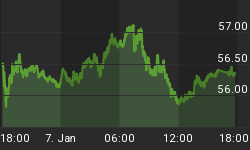As boxers like to say, it's the punch you don't see that knocks you out.
In a world where a growing part of the financial system is hidden from view and excluded from official statistics, those are words to remember.
A couple of examples from the 2008-2009 crisis:
-
Fannie Mae and Freddie Mac were private companies through which the federal government funneled a lot of mortgage debt and to which it granted a kind of de facto backing, though it asserted confidently that this would never be needed. When the real estate bubble (inflated in large part by Fannie and Freddie) popped, government -- read taxpayers -- had to assume responsibility for pretty much the whole $10 trillion US housing sector.
-
Over-the-counter derivatives are largely hidden by bank and hedge fund accounting tricks, but when that market blew up in 2008 it turned out that AIG, the world's biggest insurance company, had enough of the instruments to bring down the whole financial system. The result was another huge bailout with taxpayer cash.
Since bubbles tend not to repeat in exactly the same form, it's reasonable to assume that the next Fannie or AIG will be something very different -- like state and local pension plans, which for years have been putting away too little to cover the coming wave of retirements and are now starting to beg for help:
New Jersey legislator seeks federal loans to bail out state pensions
(Reuters) - A top New Jersey Democrat wants the federal government to create a low-interest loan program to rescue states with big public pension problems.
State Senate President Steve Sweeney called on Wednesday for a nationwide pension debt restructuring plan under which the U.S. Federal Reserve would offer low-interest loans to state governments to pay down unfunded pension liabilities.
The country has racked up nearly $1 trillion of unfunded liabilities altogether in its state-run retirement systems, according to the latest estimate from Pew Charitable Trusts. Other projections have put the number even higher.
New Jersey's badly underfunded pension system was cast further into the spotlight last year when Governor Chris Christie, now a 2016 Republican presidential candidate, slashed the state's contribution because of a revenue shortfall.
Labor unions sued, saying the cuts violated a promise Christie himself made, in 2011 pension reforms, to ramp up to full contributions.
But Christie won the battle in the state's highest court. The decision provided breathing room for the stressed state budget, but the pension problem lingers long term.
New Jersey would have to pay $6 billion on average annually for 30 years to pay off its existing $51 billion unfunded liability, the third largest in the nation, Sweeney said.
But under his proposal, the Garden State could take out a $50 million federal loan at a low 1 percent interest rate, putting the proceeds into its retirement system. If that happened in fiscal year 2017, it would cut annual pension contributions, including the loan repayment, in half to about $3 billion, he said.
This means three things:
-
The national debt of most developed countries is grossly understated because it doesn't include these and other liabilities that will soon be dumped onto the public balance sheet.
-
Individual taxpayers responsible for their governments' debts are actually far less well-off than they think because their true net worth includes these huge, inevitable negatives.
-
The currencies of most major countries aren't backed by anything like the wealth that people -- and most governments -- assume. When the next bailout wave crests, the math will be deadly for the yen, euro and dollar.
















